I have just found an interesting news: “An archaeological excavation in Badajoz foresees to bring to light the largest site of Tartessos”.
The archaeological excavation of Turuñuelo, located near Guareña (Badajoz), in the Guadiana Valley, will reveal the largest site of the Tartessic culture, the mythical pre-Roman civilization, that occupied, 2,500 years ago, the southwest of the Iberian Peninsula .
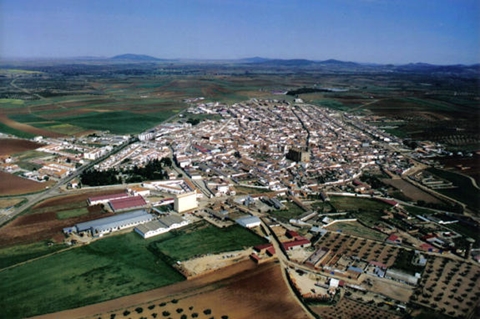
A general View of the village of Guareña
This is something that the Director of the Institute of Archeology of Mérida (IAM) and one of those responsible for the excavation, Sebastián Celestino, is clear about it; he, in statements to Efe, has emphasised that the state of conservation of Turuñuelo is "magnificent" , with "whitewashed and well-lined walls, up to two and a half metres high".
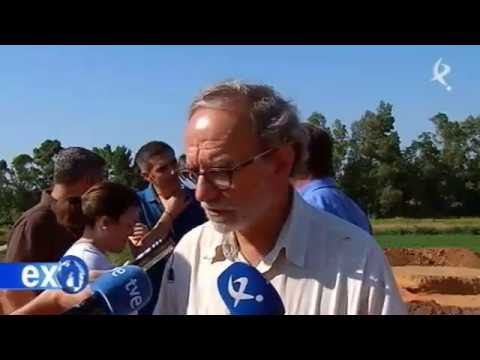
Sebastián Celestino on the site of Turuñuelo (Badajoz)
Celestino, also responsible for the excavation of the Cancho Roano Sanctuary, located ten kilometers from the locality of Zalamea de la Serena and (of Badajoz) and until now considered as the Tithesian world type site in Extremadura, has explained that Turuñuelo is the "triple of Large", since it is estimated that it has one hectare of extension.
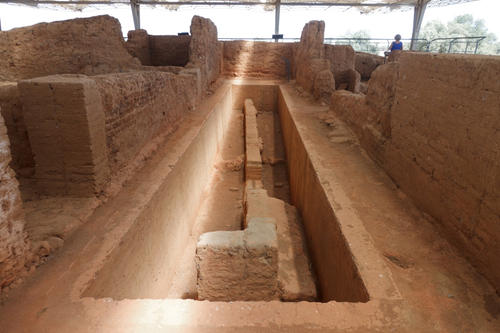
Cacho Ruano (Badaoz)
If more than 30,000 archaeological pieces appeared in Cancho Roano, the wealth of the new Guareña site, which this summer has experienced its second excavation campaign, can be incalculable and it shall shed much light on the enigmatic civilization of Tartessos.
Located between the provinces of Huelva, Seville and Cadiz, the kingdom of Tartessos, emerged from the union of Phoenicians and Iberians and with "a very strong Mediterranean flavour", it suffers a deep crisis, in the sixth century, that makes it migrate, to a rich and more protected are, like the Valley of the Guadiana, where about twelve sites of this civilization are located.
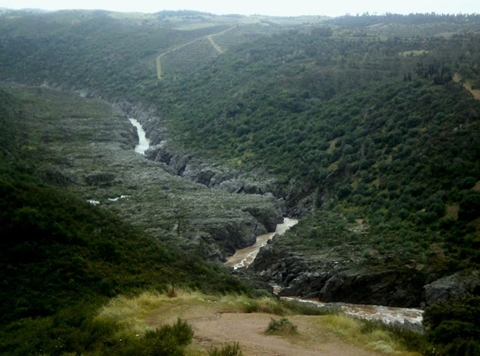
The Valley of Guadiana
According to the Director of the Archaeological Institute of Mérida, this village has left its most important vestiges in Extremadura, because, when they were invaded by the Celtic peoples of the north, they "buried and sealed their sacred places, in order that they were not violated", therefore the magnificent conservation of sites such as Cancho Roano and Turuñuelo.
In the latter, what has been excavated so far, which "is very little", has brought to light a cabin of about 70 square metres, that was the worship space of the enclave, "with an altar in the centre, benches" and a bathtub, considered as one of the most extraordinary finds of the excavation, an element "hitherto unknown" and that could be dedicated to do "some ritual related to water".
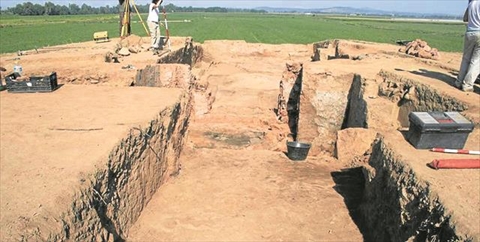
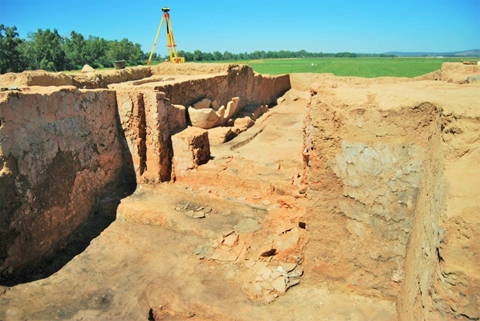
A house in Turuñuelo
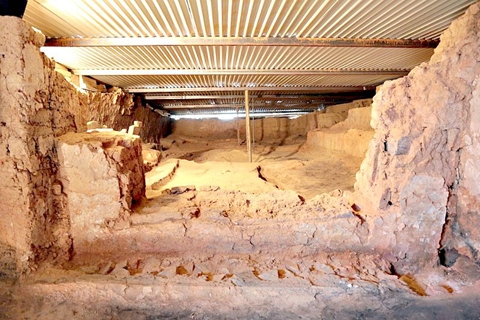
The main room
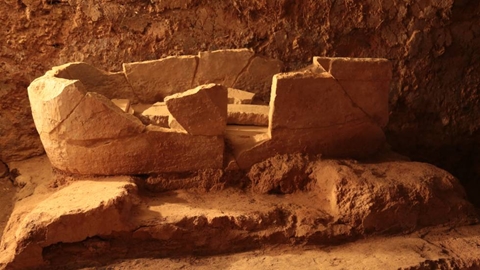
A bathtub in Turuñuelo
There are also numerous pieces related to food: a large cauldron, rotisseries or jars, all made of bronze, which "draws much attention, because we are in the first iron age and almost everything is already made in that material". However, bronze, according to Celestino, "remains a metal, that devotes much to worship", as do ivory and other "pretty sumptuous" elements, that have also appeared.
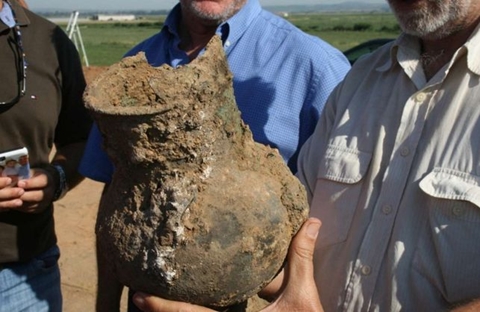
A pot of bronze found inTuruñuelo
In the Turuñuelo, a hundred pieces of pottery, "in a state of magnificent preservation", have also been found, what makes it possible to clearly establish the exact date of its manufacture, at the end of the fifth century, since "Greek ceramics allow us to know even the workshops, where they were made in Athens"..
Sebastián Celestino has explained that the pottery, at that time, came from Greece, through Ampurias and then it was distributed throughout the Iberian Peninsula, where there were distribution centres, such as the Iberian Roman city of Cástulo, in Jaén, and probably the Turuñuelo, in Badajoz , since "trade has always worked on this way".
In that sense, the Director of the excavation considers that, probably, the rest of the buildings of the site of Guareña have "a more administrative character or of warehouses".
The numerous pieces, that have appeared so far, in the Turuñelo, have been transferred to the Institute of Archeology of Merida, dependent of the Higher Council of Scientific Investigations (CSIC) and of the Regional Government of Extremadura, where they are being studied and cataloged.
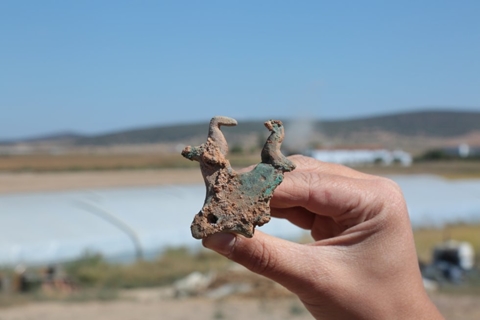
Two pigeons with a bullskin
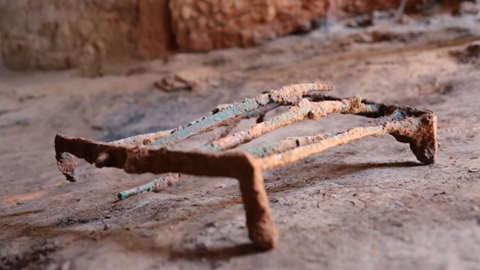
A grill in the Institute of Archeology of Merida
However, to preserve the bronzes better and they do not oidise, they have been taken to the Prehistory Laboratory of the Autonomous University of Madrid, for their restoration and preparation, before being transferred to the Archaeological Museum of Badajoz.
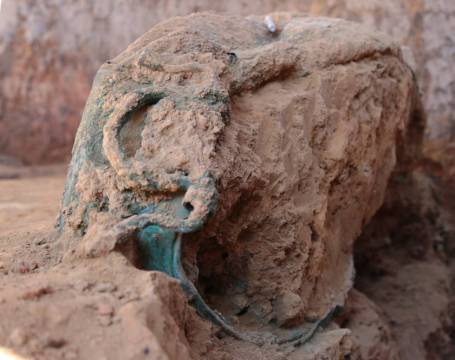
Cooking pot of bronze in Turuñuelo
Meanwhile, Sebastián Celestino and his companion Esther Rodríguez, who runs the works with him, in the site of Turuñuelo, are seeking funding, to continue with this "expensive" excavation, financed so far by the Regional Government of Extremadura, in its first campaign, with Feder funds; and by the Ministry of Economy and Competitiveness, in its second one, with investments for R & D.
Well, I hope that you have considered this article such important as I did.
Until my next post, kind regards,
Luis.
Sponsored by Costaluz Lawyers.
Please click below:
